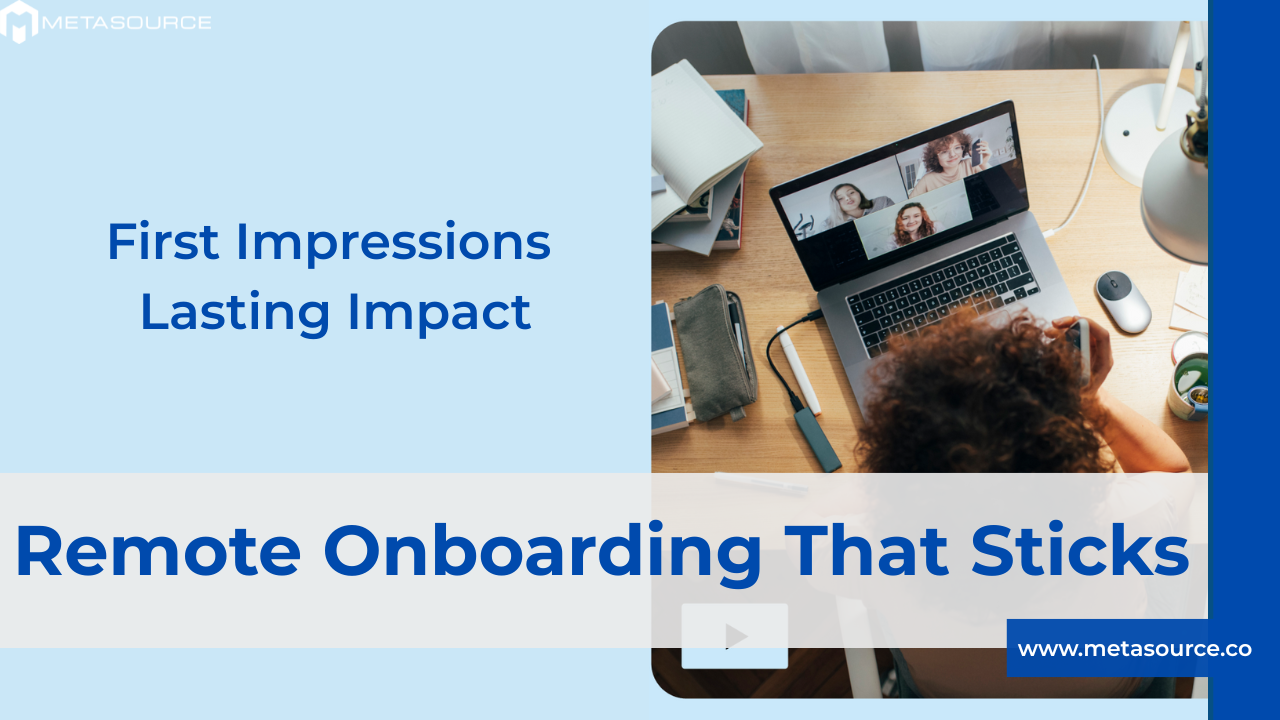Remote and hybrid work are no longer stopgap solutions—they’re the future of work. But while flexibility has its perks, it also comes with challenges. One of the biggest? Onboarding.
How do you make new hires feel connected to a company culture they may never physically step into? How do you set them up for success in a workplace that’s entirely digital?
The truth is, onboarding is no longer just paperwork and orientation. It’s about building belonging, trust, and engagement from day one. In fact, research shows that up to 20% of employee turnover happens within the first 45 days. A thoughtful onboarding experience doesn’t just reduce that risk—it helps employees thrive in the long run.
Here are eight best practices to make remote onboarding seamless, engaging, and unforgettable.
I. Send a Warm Welcome Package
First impressions matter—even when they happen through a screen.
Before day one, ship essential equipment like a laptop, monitor, and any accessories they’ll need. Pair this with company swag such as a branded mug, notebook, or even snacks. These small touches build excitement and help employees feel valued before they log in for the first time.
Bonus tip: Announce the new hire on your internal communication channel, sharing not just their role but also fun facts or hobbies. It sparks organic conversation and helps teammates connect on a personal level.
II. Make Tech Setup Seamless
Few things are more frustrating than spending the first day fighting with logins or waiting for IT.
Give employees everything they need ahead of time: credentials, VPN access, email setup, and instructions for your project management tools. Have your IT team available to troubleshoot quickly.
This ensures that when their first day arrives, the focus is on people, not passwords.
III. Schedule HR Introductions
Onboarding is also about clarity and compliance.
Within the first few days, arrange an HR session to cover essentials like payroll, PTO policies, benefits, and compliance. Make sure employees know where to access the employee handbook and who to contact with questions.
This is especially critical for global teams, where rules and regulations may differ by country. A clear HR introduction eliminates confusion and builds confidence.
IV. Kick Off With a Manager Welcome Call
The manager’s role in onboarding cannot be overstated.
Start with a casual video call where the manager welcomes the new hire, outlines the role, and sets expectations for the first week. Schedule a follow-up check-in a few days later, and continue with regular one-on-ones.
This consistent connection helps the employee feel supported and ensures alignment from the start.
V. Facilitate Personal Introductions
Culture is built on relationships.
Organize a virtual team meet-and-greet within the first week. Encourage one-on-one introductions across departments so the new hire understands not only who their teammates are, but also how different roles contribute to the bigger picture.
These personal connections go a long way toward fostering belonging and breaking down silos in a distributed workplace.
VI. Define Communication Expectations
Remote teams live and breathe through digital communication—but without clear guidelines, it can get messy fast.
Outline how your team uses different tools:
- Slack or Teams for quick chats
- Email for formal updates
- Project management tools for task tracking
Set expectations for response times and communication etiquette, especially across time zones. Clarity here prevents misunderstandings and creates a healthier, more efficient workflow.
VII. Create Clear Milestones
Remote employees need more than a job description—they need a roadmap.
Break down their journey into milestones:
- Day 1: Orientation, meet the manager, tech setup
- Week 1: Team introductions, complete first training modules
- Day 30: Establish performance goals
- Day 60: Review progress and refine deliverables
- Day 90: Increase autonomy, provide feedback on onboarding
These checkpoints give employees direction while allowing managers to track progress and provide timely support.
VIII. Encourage Engagement Beyond Work
Finally, remember that work isn’t only about tasks. It’s also about human connection.
Keep momentum going after onboarding with:
- Virtual coffee chats
- Trivia nights or social events
- Learning opportunities and skill-building sessions
- Celebrating work anniversaries and small wins
Recognizing contributions and fostering connection outside daily tasks strengthens culture and makes remote employees feel truly part of the team.
Final Thoughts
Onboarding remote employees isn’t just a checklist— it’s about building belonging.
With a warm welcome, smooth tech, clear expectations, and milestone celebrations, you’re not just adding people to workflows— you’re growing your culture.
Do it well, and new hires won’t just stay— they’ll thrive and champion your brand.
📌 Metasource Vietnam
📭 Email: info@metasource.co
🌏 Website: metasource.co
🌏 LinkedIn: https://lnkd.in/gSFhuU6Z
🌏 Careers Site: metajobs.co
hashtagRemoteOnboarding hashtagFutureOfWork hashtagHR hashtagEmployeeEngagement hashtagHybridWork


